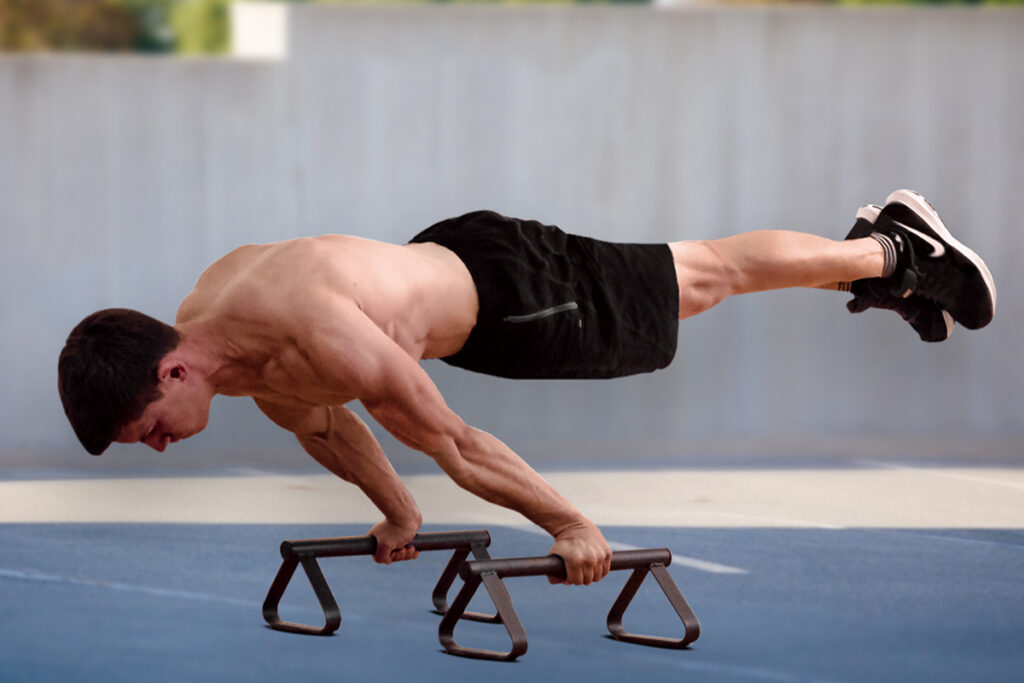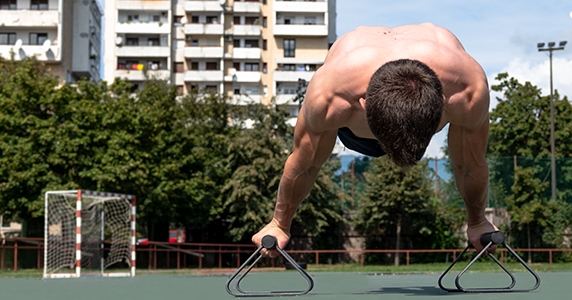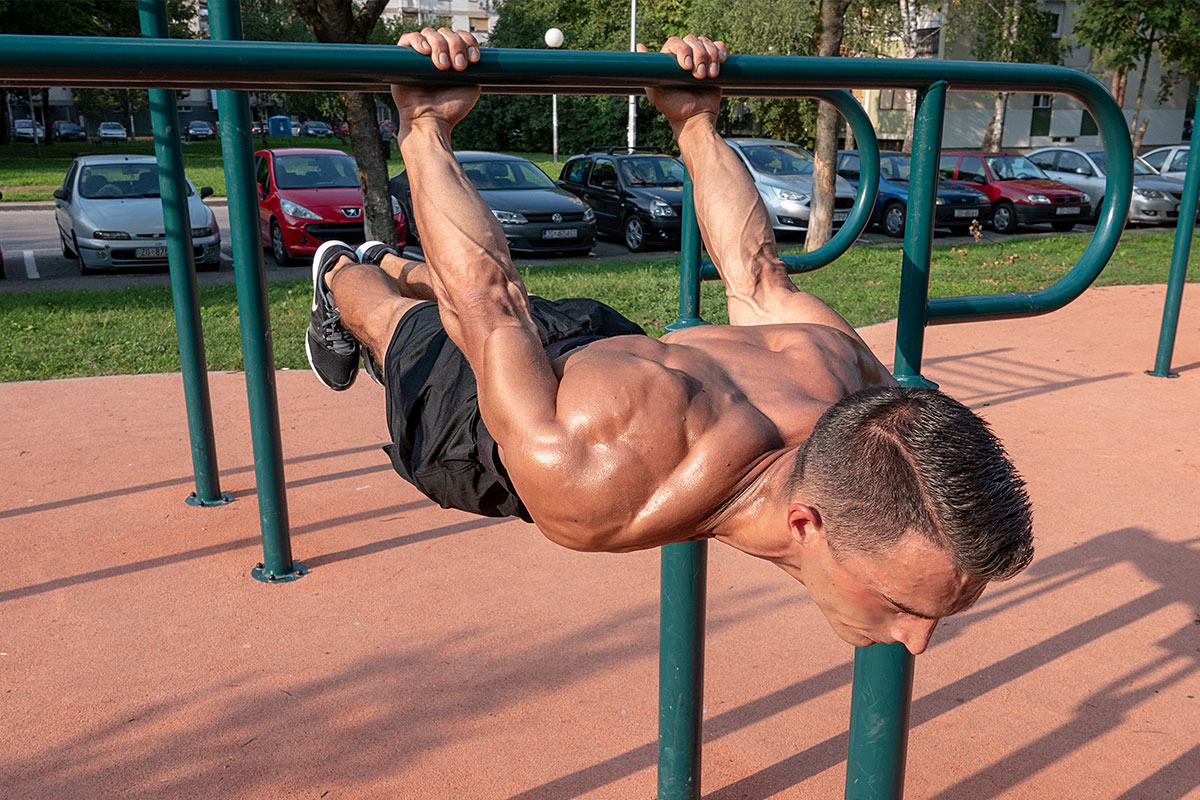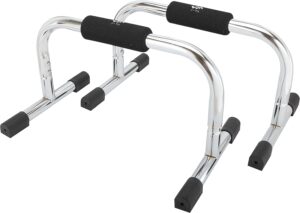So you’ve been hitting the gym regularly, mastering all the basic calisthenics moves, and now you’re ready to take your fitness journey to the next level. Look no further! In this article, we will introduce you to 10 advanced calisthenics moves that will challenge your strength, balance, and flexibility in ways you never thought possible. Whether you’re a seasoned fitness enthusiast or simply looking to switch up your workout routine, these advanced calisthenics moves are sure to push your limits and help you achieve new levels of strength and athleticism. So get ready to defy gravity and unleash your inner acrobat as we guide you through this exhilarating selection of challenging moves. Get ready, because your body is about to embark on a whole new level of fitness!
1. Handstand Push-Up

Technique
The handstand push-up is an impressive advanced calisthenics move that targets your shoulders, triceps, and upper back. To perform a handstand push-up, begin by kicking up into a handstand position against a wall. Your body should be in a straight line with your hands slightly wider than shoulder-width apart. Slowly lower yourself until your head gently touches the ground, then push back up to the starting position. It’s important to maintain proper form and control throughout the movement to avoid any injuries.
Progressions
If you’re new to handstand push-ups, it’s essential to build up your strength and balance gradually. Start by practicing regular handstands against a wall to improve your balance and body awareness. Once you feel comfortable, you can progress to partial handstand push-ups, where you only lower yourself halfway down. As you become stronger, aim to increase your range of motion until you can perform full handstand push-ups with ease.

Benefits
Handstand push-ups offer numerous benefits for your upper body strength and stability. They primarily target your shoulders, helping to build strong and defined deltoid muscles. Additionally, this exercise engages your triceps and upper back, contributing to overall upper body strength. Handstand push-ups also require core engagement for stability, which helps improve your balance and body control. As an advanced calisthenics move, mastering the handstand push-up is not only physically challenging but also incredibly satisfying. It showcases your strength and skill, leaving you feeling accomplished and motivated to push your boundaries further.
2. Planche
Technique
The planche is a challenging calisthenics move that requires exceptional upper body and core strength. To perform a planche, start in a push-up position with your hands slightly beyond shoulder-width apart. Gradually shift your weight forward, keeping your arms straight and leaning your body forward. As you lean forward, lift your feet off the ground and engage your core. Aim to hold this position with your body parallel to the ground for as long as possible before lowering back down.

Progressions
Mastering the planche takes time and dedication. It’s crucial to work on building your upper body and core strength gradually. Start by practicing planche leans, where you lean forward with your feet on the ground and hold the position for increasing durations. As you become more comfortable with the lean, you can progress to tuck planches by lifting your feet off the ground and tucking your knees towards your chest. Once you’ve mastered the tuck planche, you can work towards the full planche position, aiming to extend your legs fully while maintaining the parallel body position.
Benefits
The planche is not only an impressive display of strength but also an effective exercise for developing upper body and core strength. This advanced calisthenics move targets your shoulders, chest, triceps, and core muscles. Regular practice of the planche can lead to increased muscle definition, particularly in the arms and abs. Additionally, the planche requires a significant amount of balance and body control, helping to improve your overall coordination and proprioception. As you progress in your planche journey, you’ll not only gain physical strength, but also mental resilience and the satisfaction of achieving an extraordinary feat.
3. Muscle-Up

Technique
The muscle-up is a challenging calisthenics move that combines a pull-up and a dip into one fluid motion. To perform a muscle-up, begin by gripping a pull-up bar with your palms facing away from you and your hands shoulder-width apart. Initiating the movement with a pull-up, use your upper body strength to bring your chest above the bar. Once at the top of the pull-up, transition smoothly into a dip by pushing yourself upward. Lower yourself back down with control to complete one rep.
Progressions
Building the strength and coordination required for a muscle-up can be a gradual process. Start by focusing on improving your pull-ups and dips individually. Aim to increase your pull-up and dip numbers while maintaining proper form. Once you feel confident in both exercises, begin practicing the transition between the two movements. This can be done by performing assisted muscle-ups using a resistance band or using a low bar to practice the movement pattern. Over time, as your strength improves, you can progress to unassisted muscle-ups.

Benefits
The muscle-up is an advanced calisthenics move that targets several major muscle groups. It primarily works your back, chest, shoulders, and arms. This compound exercise challenges your upper body strength and coordination, pushing your muscles to become more efficient and powerful. The muscle-up also demands core engagement for stability, leading to improved core strength. Additionally, mastering the muscle-up provides a great sense of accomplishment and can act as a goal to strive for in your calisthenics journey.





